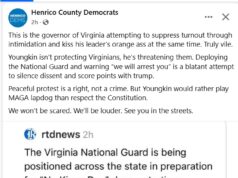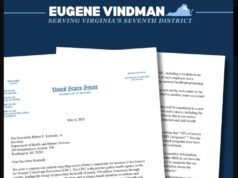Cross-posted from Main Street Insider
Check back on Wednesday for our first Sponsor Special with Congresswoman Rosa DeLauro (D-CT3). One-page summary below the fold…
Earlier this month, President Obama announced a proposal to create a a new government-owned corporation called the Infrastructure Bank. The initiative (at least the version introduced in Congress) would presumably reinvigorate the economy with infrastructure investments, by leveraging $25 billion of initial funding over five years into as much as $625 billion of project investment through bonding and other market mechanisms.
Although the bill itself isn’t scheduled for action, hearings this week in both the House and Senate may address the Infrastructure Bank concept directly. Given the heightened focus on this initiative in recent weeks and the glaring need for greater infrastructure spending in the United States, we felt this would make for a timely 90 Second Summary.
H.R. 2521: National Infrastructure Development Bank Act of 2009
Introduced 5/20/2009
Sponsor: Rep. Rosa DeLauro (D-CT3)
Click here to download this summary (pdf)
Cosponsors: 59 (59 Democrats, 0 Republicans). Full list at http://thomas.loc.gov/cgi-bin/bdquery/z?d111:HR02521:@@@P
Status: In Energy & Commerce and Transportation & Infrastructure Committees. Financial Services has partial jurisdiction. Not scheduled for action.
Senate Companion: None in the 111th Congress. A similar but not identical bill was introduced by Sens. Dodd and Hagel in the 110th Congress (S. 1926).
Purpose: In 2009, the American Society of Civil Engineers gave America’s infrastructure a grade of D, and estimated the 5-year need for investment at some $2.2 trillion. The Infrastructure Bank provides a funding mechanism for a variety of projects through public-private partnerships that will help close the “infrastructure gap”.
Summary: H.R. 2521 would establish an independent, wholly-owned government corporation called the National Infrastructure Development Bank. Following a $25 billion initial capitalization, it would be a self-sustaining entity capable of leveraging as much as $625 billion in private investment by issuing direct loans and subsidies, loan guarantees, bonds and debt securities, borrowing on the global capital market at low interest rates and pooling infrastructure-related loans and securities on the market to spread risk. The Bank would help capitalize the following:
1) Transportation Infrastructure Projects (e.g. public transit, highway and bridge repairs, port development)
2) Environmental Infrastructure Projects (e.g. drinking water treatment, waste disposal facilities, dams and levees)
3) Energy Infrastructure Projects (e.g. retrofitting buildings, smart grid, development of renewable capacity)
4) Telecommunications Infrastructure Projects (e.g. broadband expansion)
The legislation lays out a set of criteria for each project type by which each applicant must be evaluated to determine potential impact and eligibility. These generally involve environmental, health and income distribution considerations as well as more traditional cost-effectiveness criteria and other sector-specific factors.
The Bank will be governed by a five-member Board of Directors, all appointed by the President and confirmed by the Senate. The Directors will represent different regions of the country and be split between the private and public sectors in their backgrounds. The Bank’s charter is scheduled to sunset after 15 years.
CBO Score: None provided.
Supporters: President Obama, Building America’s Future (state & local electeds), Chamber of Commerce, SEIU, etc.
• Supporters believe this measure will substantially boost crucial infrastructure spending and create jobs. It will also allow for a more efficient allocation of infrastructure resources by removing political considerations.
Opposition: No public opposition, but expected to draw fire from a variety of fronts, each for a different reason.
• Opposition will likely be opposed to a large new government program, especially a government-owned bank similar to Fannie Mae and Freddie Mac. There is also some concern over transferring infrastructure financing authority from Congress to an unelected board appointed by the President.
Further links
Full bill text: http://www.govtrack.us/congress/billtext.xpd?bill=h111-2521
Official CRS summary: http://www.govtrack.us/congress/bill.xpd?bill=h111-2521&tab=summary
American Society of Civil Engineers Report Card for America’s Infrastructure: http://www.infrastructurereportcard.org/
Rep. DeLauro press release touting support for the bill: http://delauro.house.gov/release.cfm?id=2553
Obama Labor Day speech announcing Infrastructure Bank plan: http://www.huffingtonpost.com/2010/09/06/obama-promotes-job-creati_n_706652.html (see ~5:00 mark of video)
CNN article on the Bank’s political considerations: http://money.cnn.com/2010/09/08/news/economy/infrastructure_bank/index.htm














![Monday News: Trump’s Lunacy Pushes China, Russia, India, etc. Together; “Happy Labor Day. Donald Trump and Elon Musk Are Screwing Workers.”; “Where is the [media’s] intense focus on Trump’s failing health?”; ““Trump says he is not a dictator. Isn’t he?”](https://bluevirginia.us/wp-content/uploads/2025/09/montage0901-100x75.jpg)